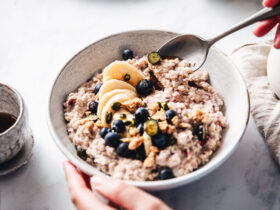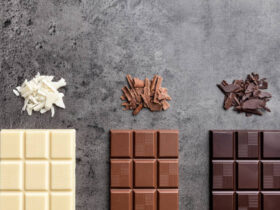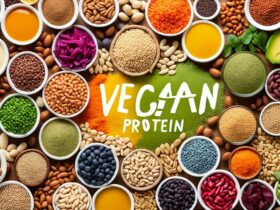Have you ever wondered when pudding first made its appearance on the dessert table? Pudding, a delicious and versatile dessert enjoyed around the world, has a fascinating history that spans centuries. In this article, we will take a journey through time to explore the origins, evolution, and regional variations of this beloved dish. So, let’s dive in and discover the delicious history of pudding!
Key Takeaways:
- Pudding has a long and rich history that dates back centuries.
- Exploring the origins and evolution of pudding offers a glimpse into the culinary traditions of various cultures.
- The history of pudding varies depending on the region and the ingredients used.
- Traditional pudding recipes showcase the unique flavors and techniques of a particular culture or region.
- Pudding continues to be a popular dessert around the world, loved for its variety and versatility.
Ancient Pudding Recipes and Origins
The origins of pudding can be traced back to ancient civilizations, where it was often considered a savory dish consisting of meat, blood, grains, and vegetables. These early versions of pudding were quite different from the sweet, dessert-style pudding that we enjoy today.
One of the earliest records of pudding comes from ancient Rome, where a dish called “puls” was made by boiling grains in milk or water. This simple recipe later evolved into “hasty pudding,” which was popular throughout Europe during the Middle Ages.
In the Far East, rice pudding was a common dish, often flavored with fruit and spices. In India, a similar dish called “kheer” was made with rice, milk, and sugar, while in ancient Persia, a dessert called “shir berenj” was made with rice, milk, and honey.
Ancient Pudding Recipes and Traditions
Throughout history, pudding recipes evolved and spread across different regions and cultures. In England, for example, a rich and creamy dessert known as “Christmas pudding” became a holiday favorite in the 16th century, while in Scotland, “clootie pudding” was a popular treat made with dried fruits and spices.
Americans developed their own versions of pudding, including “Indian pudding” made with cornmeal and molasses, and “rice pudding” made with rice, milk, and sugar. In Mexico, a traditional rice pudding called “arroz con leche” is a popular dessert, while in France, a custard-like pudding known as “crème caramel” is a beloved classic.
Today, pudding comes in many delicious varieties, from rich and creamy chocolate pudding to fruity, refreshing popsicles. But no matter where or how it’s made, pudding remains a beloved and comforting dessert with a rich and fascinating history.
Pudding Evolution and Historical Background
The history of pudding is a fascinating journey through time that reflects the culinary customs and traditions of different cultures and historical periods.
The earliest recorded pudding recipe dates back to ancient Rome, where a dish made of milk, eggs, and bread was served as a sweet treat. However, the concept of pudding as we know it today began to take shape in Britain during the Middle Ages.
| Period | Key Developments |
|---|---|
| Medieval Era |
|
| 17th Century |
|
| 18th and 19th Centuries |
|
The pudding we know and love today is a result of centuries of experimentation and adaptation, resulting in numerous regional and traditional pudding recipes around the world.
“For a long time, in many parts of the world, pudding was made from whatever could be foraged, for cereal crops like oats, barley and wheat, and made into porridges, or boiled with meat to make fillings for pies or sausage skins. Then the arrival of sugar, and rum, raisins, currants and sultanas from new colonies, a new heady mix of sweet and savory evolved. What was once a dish of convenience became a dish of celebration.”
In conclusion, understanding the pudding’s history timeline, pudding evolution, and historical background is a delicious way to appreciate the dessert’s rich and diverse heritage.
Traditional Pudding Recipes
When it comes to pudding, there is no shortage of regional and traditional variations. From the creamy and sweet rice pudding of Scandinavia to the rich and boozy Christmas pudding of the UK, every culture seems to have its own spin on this beloved dessert. Here are a few traditional pudding recipes that are worth trying:
Sticky Toffee Pudding
A classic British pudding, sticky toffee pudding is a rich, moist cake made with dates and drizzled with a toffee sauce. It’s typically served warm with a dollop of whipped cream or vanilla ice cream. One of the earliest known recipes for sticky toffee pudding dates back to the 1970s, but the dish likely has much older roots.
Flan
Flan is a popular dessert in Latin America, Spain, and other parts of the world. This sweet custard-like dessert is made with eggs, sugar, milk, and vanilla and is typically served with caramel sauce. While it may not be called “pudding” in many places, it certainly fits the bill in terms of taste and texture.
Sago Pudding
Sago pudding is a traditional dessert in Southeast Asia, made with sago (a type of starch derived from palms), coconut milk, and sugar. It’s typically served chilled and garnished with fresh fruit. Sago pudding is a refreshing and flavorful alternative to heavier, creamier pudding dishes.
Tapioca Pudding
Tapioca pudding is a classic American dessert made with tapioca pearls, milk, sugar, and vanilla. It has a unique texture, with the small, chewy pearls suspended in a creamy, pudding-like mixture. Tapioca pudding is a comfort food that’s been enjoyed in the US for generations.
These are just a few examples of the many traditional pudding recipes out there. Whether you prefer a warm, cozy bowl of rice pudding or a cool and creamy flan, there’s a pudding recipe out there for everyone to enjoy.
Conclusion
In conclusion, the history of pudding is a fascinating and rich tale that spans across cultures and centuries. From its humble beginnings as a savory dish to its transformation into a sweet dessert, pudding has evolved and adapted to suit the tastes of different regions and time periods.
Throughout this article, we’ve explored the origins of pudding, examined ancient recipes and traditions, and traced the evolution of this timeless dessert. We’ve also highlighted some of the most popular traditional pudding recipes from around the world, showcasing the unique flavors and techniques that make each one special.
By delving into the history of pudding, we gain a deeper appreciation of the dish and the culture and traditions that surround it. Whether you’re a fan of rice pudding or sticky toffee pudding, this humble dessert has a rich history that’s worth exploring.
So the next time you enjoy a bowl of your favorite pudding, take a moment to savor its delicious history and the centuries of culinary tradition that have gone into its creation.
FAQ
Q: When was pudding invented?
A: The exact origins of pudding are unclear, but it can be traced back several centuries. The concept of pudding as a dish has been around since ancient times, and it has evolved and adapted throughout history.
Q: What are some ancient pudding recipes and origins?
A: Ancient pudding recipes varied across different cultures. For example, ancient Roman recipes included ingredients like meat, grains, and spices, while medieval European puddings often contained a mixture of meat, fruits, and spices. Pudding has a rich and diverse culinary heritage.
Q: How has pudding evolved throughout history?
A: Pudding has evolved based on cultural influences and availability of ingredients. Over time, it has transformed from savory meat-based dishes to sweet desserts. Different regions have developed their own unique pudding recipes, resulting in a wide variety of flavors and techniques.
Q: Can you provide some traditional pudding recipes?
A: Absolutely! Traditional pudding recipes include classics like English Christmas pudding, Indian rice pudding, American banana pudding, and Scottish sticky toffee pudding. Each recipe has its own distinct flavors and ingredients, showcasing the culinary traditions of the respective regions.
Q: What is the conclusion of the history of pudding?
A: The history of pudding is a fascinating journey that spans across cultures and centuries. It has evolved from ancient recipes to become a beloved dessert enjoyed worldwide. Exploring the origins and evolution of pudding provides a deeper understanding and appreciation for this delicious treat.














